My son had been in preschool for about two weeks when his teacher said to me, “I predict that Sam will always test every limit, push every boundary, check daily to see what is true and what isn’t and what he can get away with.
“So,” added Judy, a wise, experienced Montessori teacher, “our job is to channel this wonderful intelligence to benefit mankind and not to become a master criminal.”
These words fell heavy on a single mom, who had already learned that her small son was able to instantly identify any uncovered electrical outlet and insert whatever was handy into it to see what happened next.
I recall, in particular, the time I was working for a presidential candidate in New Hampshire, and a lovely, grandmotherly Russian immigrant was giving me a hand with my two small children. Olga was anxious to learn all she could about her new country, and so she and the kids came with me from Boston to my candidate’s next primary event. All was set for his arrival. His car pulled up to the entrance, the candidate entered the hall — and all the lights went out. In the darkness, we heard a lone, worried voice: “Samchick, Samchick, what have you done, Samchick?”
“Sam found a plug,” my daughter, Ariel, told me when I found them after the lights were back on.
Preschool Judy would be relieved to know that Sam, so far, has shown no criminal tendencies. Instead, last week he graduated from UCLA as a fully accredited, board-certified interventional cardiologist. While I credit her for setting him on the right path, I have often wondered if Sam’s decision to become a doctor came as much from all the visits we made to emergency rooms as from her matchless Montessori guidance. All the times his mother’s heart almost stopped — such as the time he picked up a can of keyboard cleaner in a newsroom and sprayed it in his mouth or the time he turned his tricycle to shoot down our hill into the street and our poor neighbor sprained every muscle in his body, including his heart, in his rush to catch him — may have instilled in Sam the value of keeping hearts beating.
Memories like these keep coming to mind these days because last year Sam became a dad himself, and I am finding considerable satisfaction in alarming him with them. His little boy, Logan, has the same ready-to-explore-the-world gleam in his 1-year-old eyes.
Fortunately, Sam points out, Logan’s mom, a brilliant young doctor, had a less hair-raising childhood, and he is certain Logan takes after Jenny. Ha. I have seen Logan’s readiness to eat paint at his preschool.
What amazes me – and would gratify Judy, too, I know – is to see how Sam has managed this past year, the first in Logan’s life and the last, most rigorous of his medical training.
Logan was born the day after both Sam and Jenny finished their fellowships at UCLA, hers in psychiatry and his in cardiology. But he still had ahead the one-year additional training to become an interventionalist, the doc who puts stents in people to keep their hearts going. These are prized spots in training. UCLA accepted only four applicants from an extensive slate for the program. Sam was one of them.
Then he did a shocking thing for a young doctor admitted to an exclusive club of cardiologists: He asked for two months of paternity leave.
Many of us have been here: You sign a contract that guarantees vacation and maternity and paternity leave, but when you come to take it, it causes such dismay and inconvenience that you start to wonder, “Should I really do this?”
And Sam was asking not just for a day off but his promised two months, all at once. It took several months of arranging – juggling the calendar, switching days, calling in favors, working overtime – but by the time Logan arrived, Sam had secured his leave.
One of his mentors told him wistfully he had only gotten the afternoon off when his first child was born. Sam was not only in the hospital room with Jenny as Logan was born, but he stayed there until they all went home together, and he was there around the clock through all of those first thrilling and terrifying days of parenthood.
(Parenthetically, I wonder if this time might be even harder on two medical parents; they know what can happen. My college roommate, who became a doctor and married one, too, told me she feared she might strangle her husband if he diagnosed meningitis in their baby in the middle of the night one more time. He never was right.)
After two months, Sam began the interventional training. I still wonder how he did it. Add to the sleep-deprived nights with an infant tension-filled days and nights of a demanding, uncompromising program.
I perceived, nonetheless, that he was determined to keep strong those bonds that had grown between the three of them — mother, dad and baby. He made the time. He tried to figure out how to lighten the burden that Jenny had taken on, delaying her own career start for six months, then working part time while Sam worked his 15-hour days followed by weekends on call, dashing off at all hours to perform the precise procedures that save peoples’ lives. And he managed to have fun, too, as Logan began to explore the world. He likes the Warriors, Sam reported; he had a fever, but he was OK now; he tried to eat a bagel; he slept for almost four hours. And the way Logan was happy to see him when he finally made it wearily home made all the difference in the world.
In his midyear performance evaluation Sam ran into criticism from a mentor. He was too nice. He spent too much time talking to patients, to younger fellows, to residents and even to med students. He spent too much time thinking about his family. He’d never make the quota of procedures he needed to graduate. The mentor suggested he quit the program — this to a young dad who had worked on Christmas Eve while his and Jenny’s families up in the Bay Area were clamoring for them to come home; this, as Los Angeles began to go up in genuine flames in the January fires. Everyone else rallied around him, and nurses kept admiring his new photos of Logan.
Kudos to Sam. He didn’t quit, but he did take one of his four weeks of unused vacation to get his family out of the smoke-filled air. They went to Maui, and the grandparents — Jenny’s parents from Fremont and I — went, too. Our sightseeing was exclusively of Logan: Logan in the pool, Logan eating his first mango, Logan splashing in the sea. (OK, we did see humpback whales passing in the background.)
Just before this Father’s Day, Sam finished the program and found a job with a non-profit group of doctors in the Bay Area, much to the delight of the grandparents. The deciding factor for him in going with this group, Sam said, was his first conversation with his prospective bosses: They talked about their children.
The world is changing, and while it may seem hard to find instances where it is changing for the better, they do exist. Sam is not alone in wanting to be a different kind of dad who is trying to share the challenge and learning, as a result, that not much else matches the experience of seeing the world anew through the eyes of your child — who has just figured out how to open doors.
Preschool Judy would be proud. So am I.
—
Sasha Paulsen is a journalist and novelist who lives in Napa.
Poems of the Day
Only a Dad
By Edgar Guest
Only a dad with a tired face,
Coming home from the daily race,
Bringing little of gold or fame
To show how well he has played the game;
But glad in his heart that his own rejoice
To see him come and to hear his voice.
Only a dad with a brood of four,
One of ten million men or more
Plodding along in the daily strife,
Bearing the whips and the scorns of life,
With never a whimper of pain or hate,
For the sake of those who at home await.
Only a dad, neither rich nor proud,
Merely one of the surging crowd
Toiling, striving from day to day,
Facing whatever may come his way,
Silent whenever the harsh condemn,
And bearing it all for the love of them.
Only a dad but he gives his all
To smooth the way for his children small,
Doing with courage stern and grim,
The deeds that his father did for him.
This is the line that for him I pen:
Only a dad, but the best of men.
About the author: Edgar Albert Guest (1881–1959) was a British-born American poet often called the “People’s Poet” for his optimistic and plainspoken verse. After immigrating from England to the United States as a child, he spent most of his life in Detroit, where he began his writing career as a copy boy at the Detroit Free Press. His first poem appeared in the paper in 1898, and over the next four decades he published more than 11,000 poems, syndicated in hundreds of newspapers nationwide.
Guest’s poetry found a devoted readership in the early 20th century, especially during the Great Depression and both World Wars. His work offered moral encouragement through themes such as hard work, family, patriotism and faith. While his popularity with the public was unmatched, literary critics often dismissed his verse as overly sentimental and lacking in formal complexity. Nevertheless, Guest was named Michigan’s first poet laureate in 1952 and became a familiar voice on radio and television.
A contemporary of Robert Frost and Carl Sandburg, Guest followed a different path—writing not for literary acclaim but for a mass audience seeking comfort and affirmation during uncertain times.
Are you a poet, or do you have a favorite piece of verse you'd like to share? Napa Valley Features invites you to submit your poems for consideration in this series. Email your submissions to napavalleyfeatures@gmail.com with the subject line: "Poem of the Day Submission." Selected poets will receive a one-year paid subscription to Napa Valley Features (a $60 value). We can’t wait to hear from you.
Today’s Caption Contest
Pick your favorite caption or add your own in the comments below.
Possible Captions:
“You’re doing great, Dad. Only 73 more parts to go.”
“The instructions say ages 3 and up?”
“It’s OK. I can walk until college.”
“It’s a bike, not open-heart surgery… right?”
“Good news: I’ve already outgrown it.”
Last week’s contest results
In “'One Book Napa' Connects the Community,” the winning caption was, “Some people escape with books. I escaped into one,” with 42% of the votes.
"One minute I was reading. The next, I was gone."
"This is why I never read alone at night."
"Some people escape with books. I escaped into one."
"Plot twist: Turns out, I’m the sequel."
"Technically, I live between pages now."
Last Week
Tim Carl reported on “Under the Hood: Auction Napa Valley’s $6.5 Million Moment — and What Follows,” detailing the auction’s financial rebound and the challenges it still faces. Despite a solid showing and increased participation, the event raised just a fraction of its 2014 peak, reflecting broader shifts in wine philanthropy and donor behavior. Carl explored the auction’s dual role in supporting community services and elevating Napa’s wine prestige, while also raising concerns about transparency and long-term funding sustainability. He noted the growing dominance of rival auctions and called for structural reforms. Proposals include creating an independent community fund to manage philanthropic impact.
Sasha Paulsen introduced “Sunday E-dition: 'One Book Napa' Connects the Community,” a new local initiative that invites Napa readers to engage with Margot Livesey’s novel “The Road From Belhaven.” The program, launched by the Napa Valley Writers’ Conference in partnership with local bookstores and the library, aims to foster community through literature. Paulsen reflected on her personal connection to Livesey and the inspiration drawn from a 1993 writers’ conference that helped launch her own writing journey. Events featuring Livesey, including readings, discussions and craft lectures, are scheduled for July across Napa. Copies of the featured book are available at area bookstores and through the Napa County Library.
Aileen Carroll encouraged readers to explore their neighborhoods with “Turn Your Town Into a Scavenger Hunt for Trees,” a playful and educational guide to identifying tree species and understanding tree health in Napa Valley. Carroll explained natural phenomena such as photoperiodism, root flares, and fungal growth, while highlighting common issues such as girdling roots and invasive species. The article offered scavenger tasks for each topic, promoting interactive learning through observation and note-taking. Readers were also invited to upcoming workshops on rose care and aloe gardening hosted by the UC Master Gardeners of Napa County.
Kathleen Scavone explored the geologic and cultural significance of volcanic glass in “Napa Obsidian Past and Present.” She described how obsidian formed from ancient volcanic activity and how Glass Mountain near St. Helena remains a visible example of this natural process. Scavone highlighted the use of Napa obsidian by Indigenous peoples, particularly the Wappo, and detailed its importance in trade and toolmaking. The article included insights from geologists and archaeologists on obsidian hydration dating, which helps estimate the age of artifacts. Local museums and parks continue to showcase Napa’s geologic heritage through obsidian displays.
Dan Berger examined the growing crisis in the wine industry in “Wine Chronicles: Making Wine Is Great. Selling It Is a Nightmare,” citing rising costs, shifting consumer preferences and distribution challenges. He argued that many winemakers struggle with sales and marketing, a difficulty magnified by changing alcohol trends and a growing preference for lower-alcohol beverages. Berger detailed industry retrenchments, such as Constellation Brands selling off major labels and Republic National Distributing Co. exiting California. He also noted that the wholesale system disadvantages smaller wineries, many of which face high costs and regulatory complexity to reach consumers. Despite the grim outlook, Berger acknowledged past downturns and hinted that recovery may yet come.
Tim Carl highlighted the upcoming exhibition “Bob McClenahan’s Napa: A Photography Exhibit at the Copia,” opening June 18 at CIA at Copia and running through Sept. 1. The show features 16 photographs curated by McClenahan shortly before his death, with all proceeds supporting a scholarship fund for his sons. Known for capturing defining moments across Napa Valley events, McClenahan’s work is presented not as fine art but as a reflection of the community he quietly documented. Festival Napa Valley organized the exhibit to coincide with its summer season. Admission is free and donations are encouraged.
—


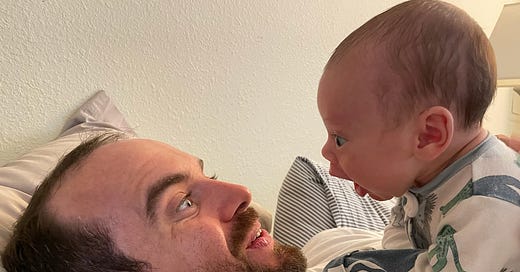








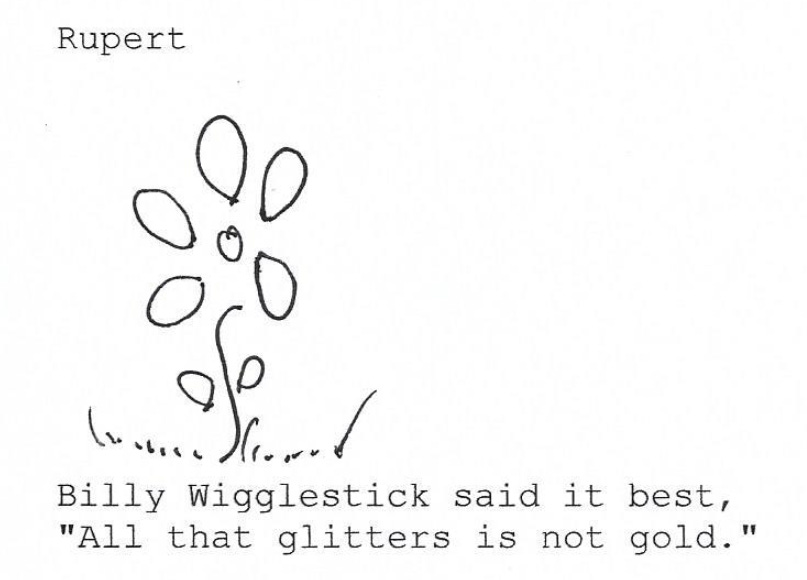
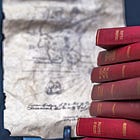
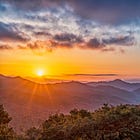
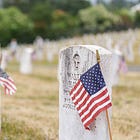

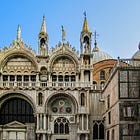




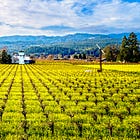
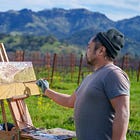

Sasha’s story of her son and grandson speaks with love and pride. A beautiful piece. My guess is that her son’s caring mirrored her own parenting, too.
It was a pleasure to read Sashas’s story about her son and grandson.